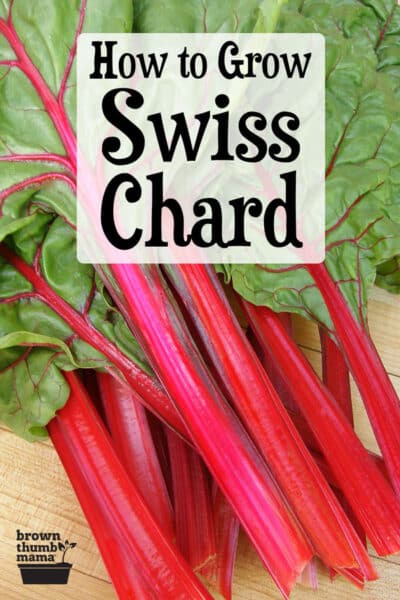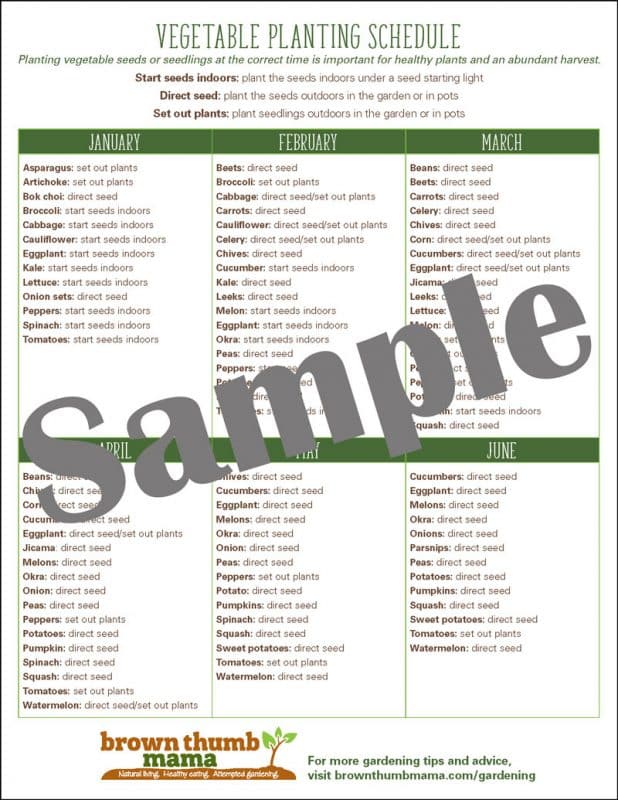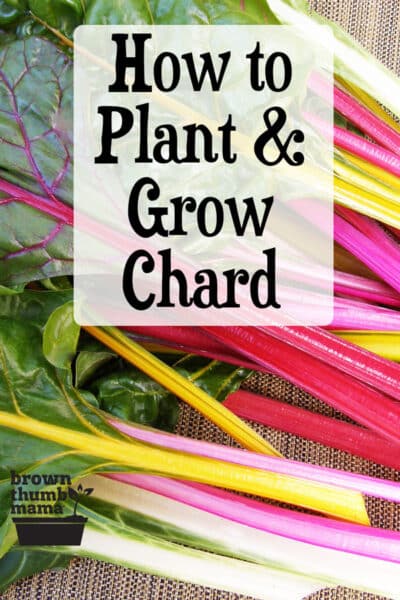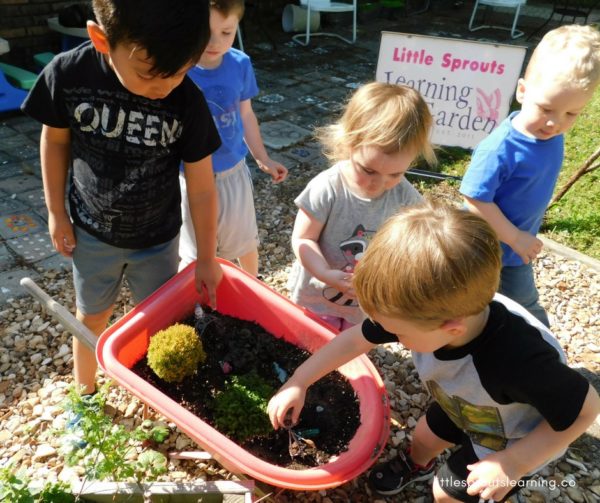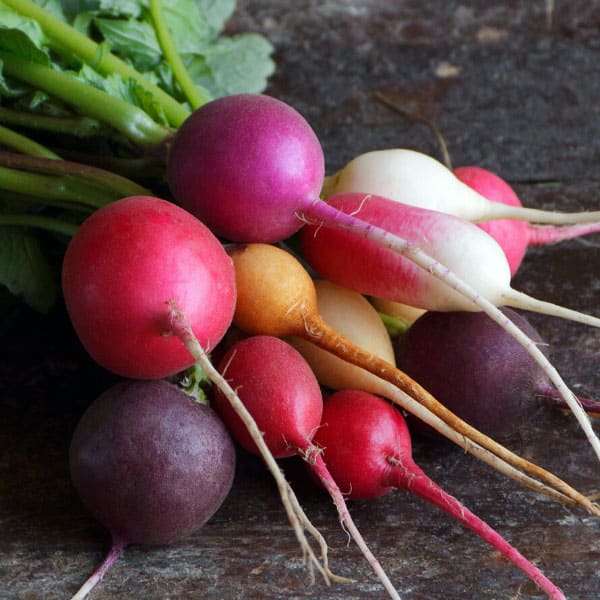This post may include affiliate links.
If you make a purchase, I'll earn a small fee at no extra cost to you.
Chard is a beautiful and prolific vegetable that is easy to grow. Learn everything you need to know about planting, growing, and harvesting chard with this comprehensive guide.
Ok folks, let’s be honest. Chard is a commitment. Not because it is hard to grow–quite the opposite. It grows vigorously, provides a continuous harvest, and can even survive the winter in mild climates.
But if you are the only person in your family who likes Swiss chard, only plant one single plant! Otherwise, it will just keep growing and growing, and you’ll end up eating it so often that you’ll feel like you’re turning into a chard plant yourself. Ask me how I know.
Although it’s sometimes called Swiss Chard, chard isn’t from Switzerland at all. This hearty, colorful vegetable may have originated in Sicily, and is a member of the beet family. The word “Swiss” was added to its name in the 19th century to distinguish it from French varieties of spinach.
Chard can be eaten raw or cooked, and is a good source of vitamins A, B, C, E, and K. Its large, crinkled green leaves (called savoyed leaves) and colorful edible stalks (called petioles) are so beautiful, it can be grown as an ornamental.
Sun, Water, Soil
Chard will be happiest with 6 hours of full sun, but can tolerate partial shade. I plant mine on the east side of the house, so they get morning sun and are shaded during our hot summer days.
Chard needs deep, loose, fertile soil. When planting, amend the soil with compost and EB Stone Sure Start.
Be sure to water consistently, especially as the plants get large. Mulch with straw to conserve water and keep weeds down.
Planting & Spacing
In early spring, plant seeds directly outside. Make a hole about ½ inch deep, and space seeds 12 inches apart.
Not sure when you should plant your chard? You need a Vegetable Planting Calendar that tells you exactly what to plant each month.
It’s important to give your seedlings plenty of room, because chard grows into large, vase-shaped plants that can be 2 feet tall. Water gently and keep the soil moist until the seedlings appear.
Fertilize two months after planting and again 2-3 months later. I like to use EB Stone Organics Blood Meal to ensure large, deep-colored leaves, and EB Stone Organics Tomato & Vegetable Food to boost production.
Pests, Diseases, Companion Plants
Chard is fairly resistant to garden pests and diseases. You might find some aphids on your chard toward the end of the season–here are 8 natural ways to get rid of aphids.
There are several vegetables that will grow well with chard, including broccoli, cauliflower, cabbage, onions and green beans. Learn more about companion planting in the book Carrots Love Tomatoes.
Harvesting
Chard is ready to harvest about two months after planting. Cut the outer leaves half an inch above the ground, and new leaves will grow from the center. You can harvest continuously as the outer leaves mature.
Once the plant produces a seed stalk (usually late summer), the leaves will become tough. Pull the entire plant out and put it in your compost pile.
Recipes with Chard
Add finely chopped chard leaves to Baked Italian Meatballs
Stir-fry the stems and add to Homemade Fried Rice
Make my friend Amy’s Swiss Chard Pasta with Garlic



